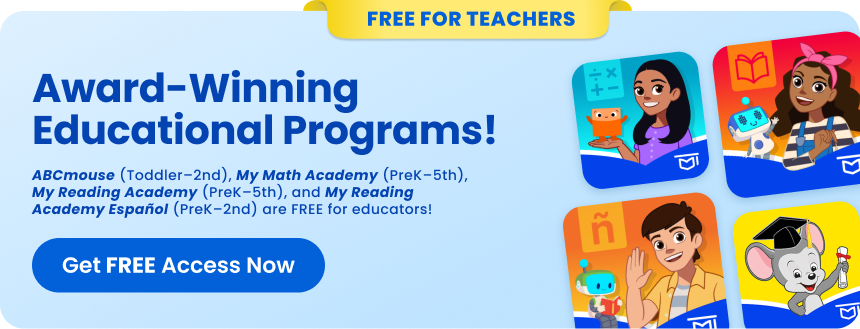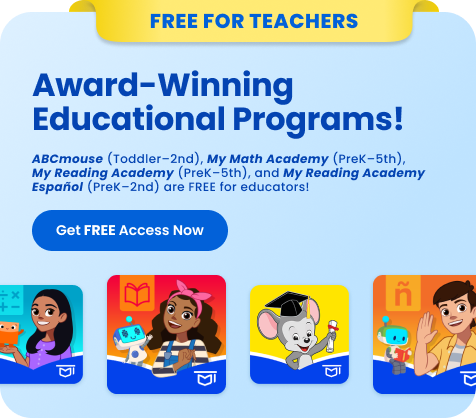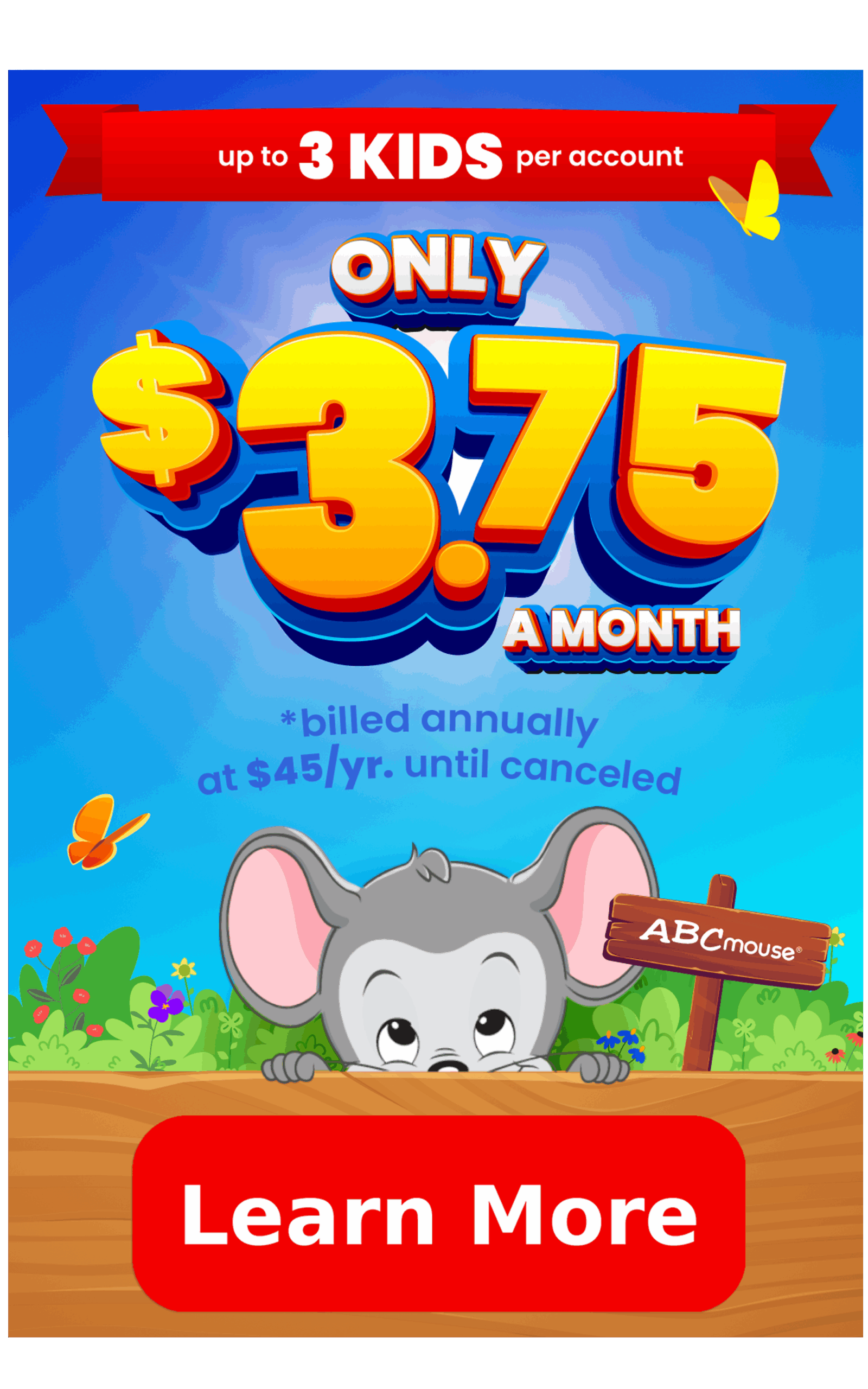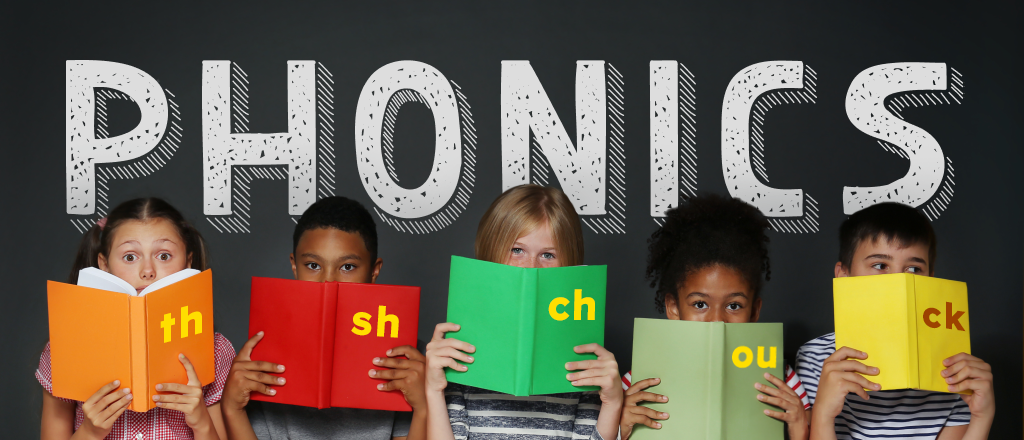
How to Teach Phonics
Phonics are an essential part of learning to read. Here are some tips to help you get started with your child.
What is phonics?
Phonics is the idea that every word can be broken into individual sounds (phonemes), and each of those sounds can be represented by letters. It’s one of the building blocks of the reading process.
We teach new readers that each letter makes its own sound(s). When you combine those sounds together, you get a word. The process of sounding out a word is known as decoding, and it goes hand-in-hand with phonics.
Of course, the English language is a tricky one, with letter combinations like /sh/ and /th/ that make entirely new sounds. It also includes long and short vowel sounds, silent-E words, R-controlled vowels, and more. Phonics helps emergent readers learn to recognize all of these patterns and the sounds they make, building on their skills over time.

Why is phonics important?
“Give a man a fish, and he eats for a day. Teach a man to fish, and he eats for a lifetime.”
Decades of research have shown that phonics and decoding are extremely effective in teaching reading. When you make the connection between letters or letter patterns and sounds, you can decode the vast majority of words you come across. Of course, students must also develop their vocabulary to understand new words, but phonics gives them the ability to read the written words themselves.
As a part of the science of reading, phonics has clear benefits for all readers. An emphasis on phonics generally helps kids learn to read faster, developing the fluency they need to become proficient readers.
How do I teach phonics to my child?
You can start preparing your child for phonics at a very young age, by developing what’s known as “phonemic awareness.” Essentially, this means helping children to recognize different sounds, and hearing those individual sounds within words. Then, move on to learning the alphabet and matching letters with the sounds they make. Finally, kids are ready to combine those sounds into words.
Many experts recommend teaching letter phonics non-alphabetically, to help kids master letters in an order that gets them reading real words more quickly. The sooner they’re able to read simple words, the more excited they’ll be.
Here are just a few expert-recommended letter orders to consider:
Once emergent readers master basic letter-sound correlations, they’re ready to learn more complex phonics skills like letter blends and patterns, and rules like silent-E. Phonics remains important throughout the elementary years, until students have developed strong reading fluency. Here are the skills and concepts to teach in preschool through second grade, and some activity ideas.
Make Learning Phonics Fun
Children often learn best through play. Finding ways to make learning phonics fun will keep them engaged and motivated. Making your phonics lessons more interactive and enjoyable can help your child to participate actively, which enhances their ability to absorb and retain the concepts.
One of the easiest ways to make learning phonics fun is with a program like ABCmouse. Full of games, songs, colorful lessons, and interactive stories ABCmouse transforms the traditional approach to phonics into an engaging adventure. Children can play their way through learning letter sounds, blending, and word recognition.
Here are some of the ways ABCmouse makes learning phonics fun.
Letter Sounds Games:
Games like Alphabet Sounds at the Market, or First Letter in Line children have the opportunity to hear and pronounce the initial letters of everyday words they encounter in their daily lives.
Word Building Games:
In games like Mr. Wordsmith’s Word Machine, Children select initial consonant blends to name objects generated by Mr. Wordsmith’s Word Machine. When an item, such as a truck, appears, they complete the word by choosing the correct consonant blend for the missing letters.
Silent E Card Tricks Teaches the silent ‘e’ rule through a story-based game, transforming CVC words to magic ‘e’ words.
Memory Match games:
ABCmouse has a variety of phonics memory match games designed to help students practice letter-sound associations. This helps to connect phonemic awareness with reading fluency in a fun way.
Free Phonics Worksheets:
This collection of free printable phonics worksheets provides an overview of vowel sounds, consonant blends, syllables, digraphs, silent letters, and more. We recommend using these phonics worksheets with children in kindergarten and up.
More Phonics Learning Activities:
Discover 50+ engaging and effective phonics activities perfect for PreK and Kindergarten! This curated selection includes exciting games, digital tools, printable resources, and hands-on projects aimed at strengthening early reading skills.
Learn Phonics with ABCmouse’s Reading Program
ABCmouse’s reading program is packed with hundreds of activities designed to help young children build foundational phonics skills. Through a personalized learning path, kids can progress at their own pace, making learning fun and engaging. Dive into the ABCmouse Reading Program and start your phonics journey sign up today!

Then just $14.99 a month until canceled
Teaching Phonics by Grade
The approach you’ll take in helping your child learn phonics will vary as they get older, as will the sounds and words they work on. Use the following information to help guide you as you teach your child phonics over the years or to children of different ages.
Teaching Preschool Phonics
Preschoolers should focus heavily on phonemic awareness: the ability to hear individual sounds within words. They may also learn the alphabet, and begin to make connections between the letters and the sounds they make. Some pre-K kids are able to sound out (decode) short words, but if your child isn’t there yet, that’s just fine. Be patient, and let kids progress at their own pace. Learn more about teaching phonics to preschoolers.

Teaching Kindergarten Phonics
Kindergarteners should master the alphabet and make letter-sound correspondence automatic. They learn long and short vowel sounds, and use their phonics skills to start decoding CVC (consonant-vowel-consonant) words. Use this time to build a strong phonics foundation, giving new readers the skills they’ll use in the years to come.
Discover more about teaching phonics to kindergarteners here, with ideas like:
- Letter Swat
- Letter Races
- Consonant-Vowel Ball Bounce
- CVC Playdough Squish
- CVC Nonsense Words
Teaching First Grade Phonics
By first grade, kids should be fluent in basic phonics and letter-sound correspondence. Now they’re ready for more advanced phonics concepts, like blends, digraphs, and silent-E words. Each of these skills will help them decode more complex words, expanding the selection of texts they can tackle.

Get more information on teaching phonics to first graders here, using activities like:
- Letter Blend Sort
- Digraph Flowers
- Magic E Wands
- Active “-Ing” Words
- Syllable Cut-and-Assemble
Teaching Second Grade Phonics
Second graders should be comfortable using phonics to sound out many words, and just need to add a few new skills to their toolkit. They learn concepts like vowel teams, prefixes and suffixes, and irregular but common patterns. This prepares them to decode nearly any word they come across that follows regular spelling patterns.
Find out more about teaching phonics to second graders here, with activities and ideas like:
- Vowel Walk
- Bossy R
- Prefix Flip Books
- Suffix Wands
- Q-U Wedding
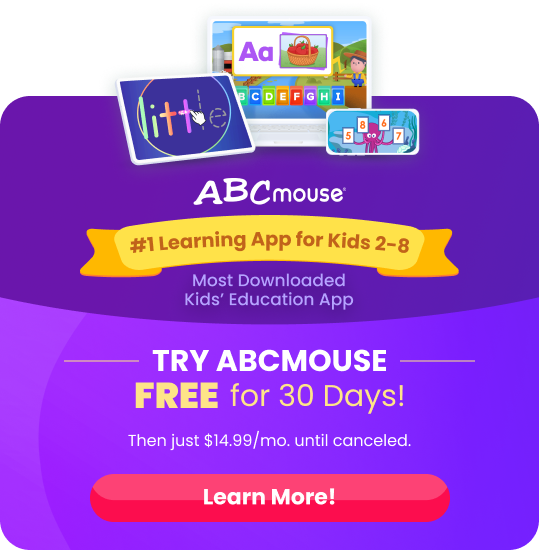
ABCmouse’s expert advice review process:
Our team of ABCmouse Curriculum Experts, made up of talented professionals in early childhood education and development, take a close look at educational content and learning claims. They put in the effort to make sure our information is accurate and current. We have a certified educator or another respected authority review the content, matching their expertise with the topic at hand. They’ll make sure the content is thorough and follows the latest research and educational guidelines. If they think we can make things even better, they’ll chat with our editorial team, and we’ll make those improvements right away. Only after a reviewer gives their thumbs-up does a piece of content get the official stamp of approval in the byline.
Legal Disclaimer: Any information, materials, or links to third-party resources are provided for informational purposes only. We are not affiliated with and do not sponsor/endorse these third parties and bear no responsibility for the accuracy of content on any external site.


